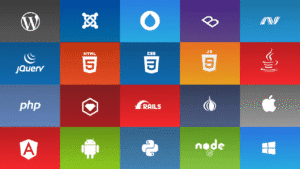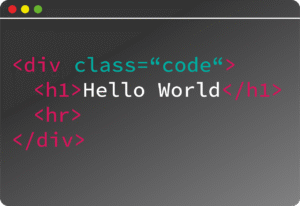
Mastering CSS Pseudo Elements: Enhance Your Web Design with Precision
Introduction
Imagine creating a webpage that looks polished and professional without adding extra HTML code. How? By using CSS pseudo elements. These are powerful tools that let you style parts of your page in ways you never thought possible. They’re essential today because they make your site more dynamic, appealing, and accessible—without complicated coding. As web design gets more competitive, mastering pseudo elements can give your site that extra edge in user experience and visual wow factor.
What Are CSS Pseudo Elements? An Essential Overview
Definition and Basic Concept
CSS pseudo elements are special selectors that target specific parts of an element or create virtual elements. Think of them as invisible helpers in your code that add style or content where needed. Unlike pseudo classes, which change style based on state (like hover or focus), pseudo elements create new parts or alter existing ones within the element itself.
For example, ::before adds content before an element, while ::after does the same after it. They help you craft detailed, styled components without cluttering up your HTML structure.
Common Pseudo Elements in CSS
Here are some of the most used pseudo elements and how they fit into your design:
::before— Inserts content before an element. Great for adding icons or decorative effects.::after— Adds content after an element, useful for custom tags or borders.::first-letter— Styles the first letter inside a paragraph. Perfect for creating drop caps.::first-line— Styles the first line of text, often for emphasis.::selection— Styles the part of text highlighted by the user, improving accessibility and visual consistency.
Real-world uses range from customizing list bullets to highlighting selected text.
How Pseudo Elements Enhance Styling Capabilities
Using pseudo elements transforms the way you style your site. Want a border that appears only on hover? You can do that with ::after. Need a fancy drop cap? ::first-letter is your friend. They eliminate the need for extra HTML, making your code cleaner and easier to manage. Plus, they open doors to creative effects like animated icons or complex layouts—boosting both aesthetic appeal and site performance.
Research shows that websites using well-placed pseudo elements often load faster, as fewer HTML tags are needed. This approach improves user engagement by making pages more attractive and easier to read.
Practical Applications of CSS Pseudo Elements
Decorative and Cosmetic Uses
Pseudo elements are perfect for adding visual flourishes without cluttering your code. Want stylish list bullets? Use ::before to add custom icons or images instead of default bullets. Need a background stripe behind text? Layer it with ::after. The possibilities are endless.
Text Styling and Manipulation
Enhance typography effortlessly. Use ::first-letter to make initials larger or add color and style for a magazine look. ::first-line can change font style or size for the opening line of your paragraphs, making your content more inviting and readable.
Creating Interactive and Dynamic Elements
Combine pseudo elements with hover effects or animations. For example, an arrow that spins on hover? ::before or ::after can generate the arrow shape, then animate it with CSS transitions. These effects grab attention and give your website a modern, lively feel.
Accessibility and User Experience
Pseudo elements can help improve how users interact with your site. For accessibility, you can create custom focus indicators or highlight selected text. This makes navigation easier for keyboard users or those with visual impairments. Following best practices ensures your site is inclusive and user-friendly.
Advanced Techniques and Tips
Combining Multiple Pseudo Elements
Layer styles by stacking pseudo elements. For instance, create a toggle switch with ::before for the track and ::after for the thumb. This approach lets you craft complex, interactive components without extra HTML.
Using Content Property Effectively
The content property is key. It can insert text, icons, counters, or images. For example, make a list with numbered items styled via ::before with content: counter(item). This dynamic insertion keeps your code flexible and easier to update.
Browser Compatibility and Best Practices
Most modern browsers support CSS pseudo elements well. But always check compatibility, especially for older browsers. Use fallback styles to maintain appearance where support is limited. Keep your CSS organized to avoid conflicts or overly complex styling.
Performance Considerations
Heavy use of pseudo elements can slow down rendering if overdone. Use them wisely—preferably only where they add real value. Minimize unnecessary pseudo elements and optimize your CSS for fast loading and smooth animations.
Expert Insights and Best Practices
Web designers agree that pseudo elements make styling more flexible and maintainable. “They allow for more creative control without HTML clutter,” says one industry veteran. However, avoid relying on too many layers, which can get messy. Keep your CSS manageable by commenting and organizing your pseudo element styles clearly.
Stick to consistent naming and avoid redundant styles. Test across browsers to ensure everything looks perfect. This discipline helps keep your site fast, functional, and visually appealing.
Conclusion
CSS pseudo elements are a game-changer in web design. They give you endless creative options to style your site better and faster. From decorative touches to interactive effects, their power lies in helping you build cleaner, more engaging pages. Practice and experiment regularly—they’re worth every moment. Once you master them, your websites will look more professional and feel more polished than ever before.
Start exploring pseudo elements today. Your web designs deserve it!



































































































